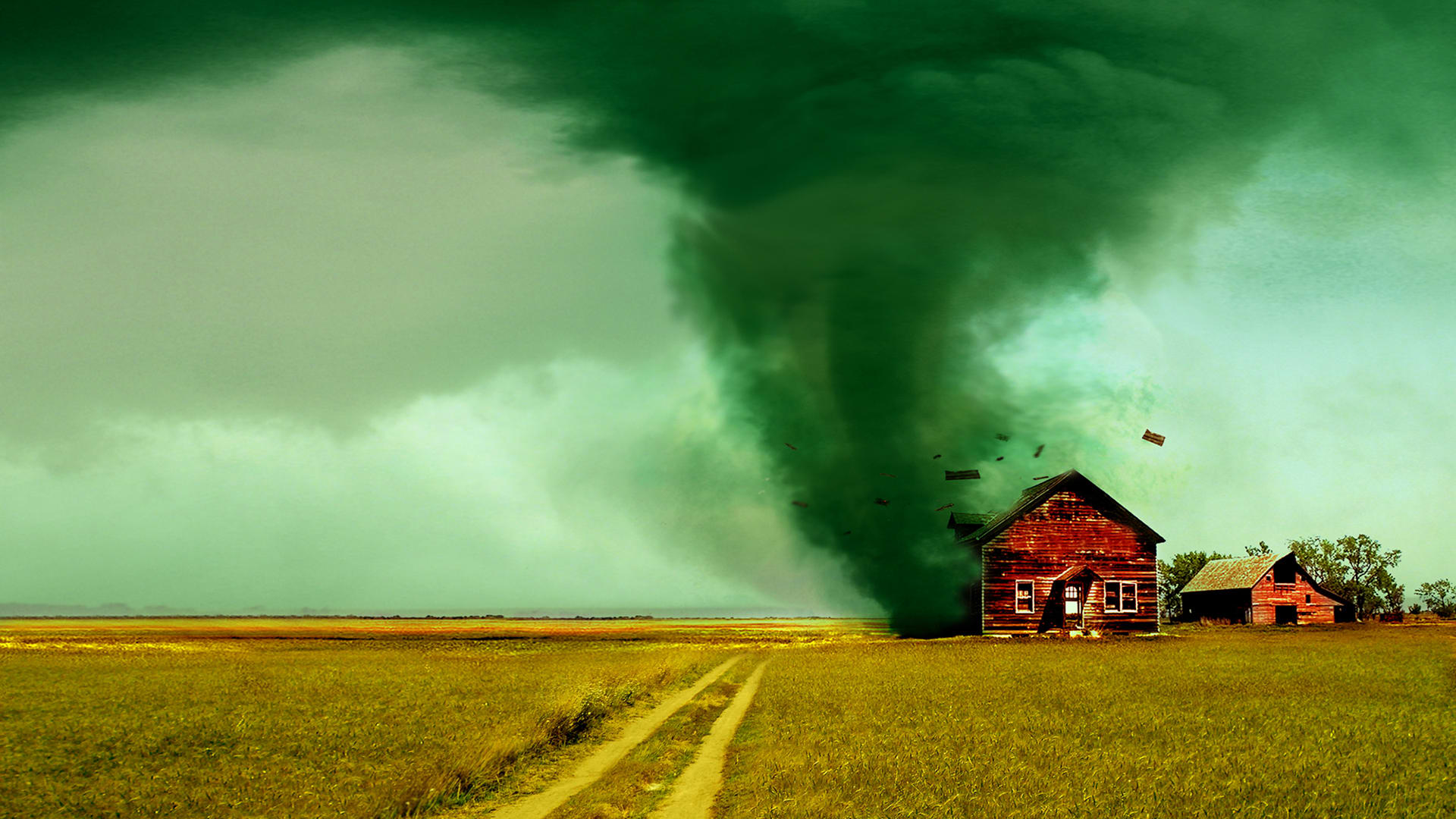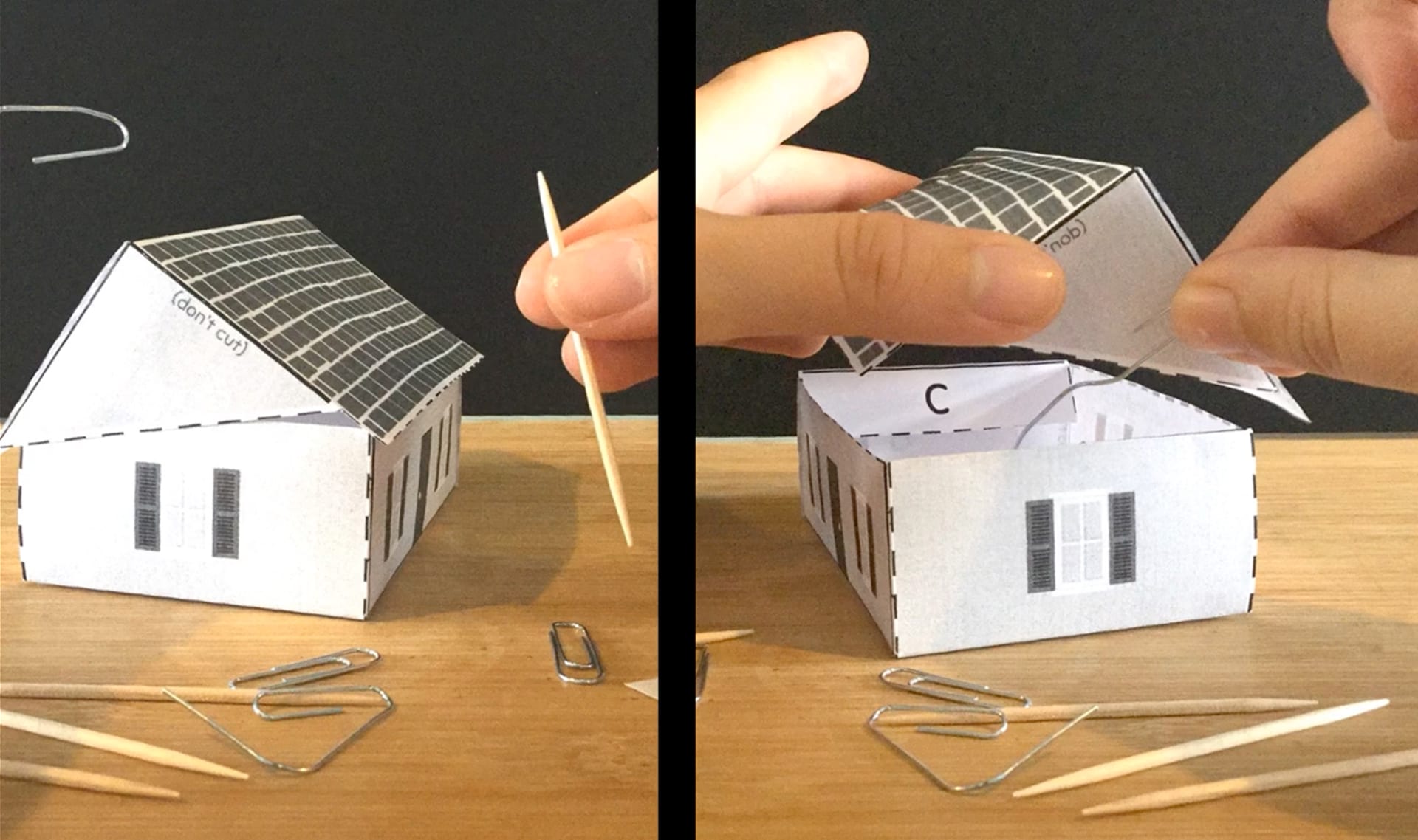
¿Cómo puedes prevenir que el viento se lleve a una casa?
Natural Hazards & Engineering
4.7
(13212 reviews)
Scroll for prep

Please wait…
This video is having trouble loading. You may have lost your Internet connection.
Step 1: Click to Reload this page
Step 2: Click to
Try our other video player
Step 3: Contact your teacher if trouble persists.
Or,
dismiss this message.
CONVERSEMOS (1 de 2):
¿Hay vientos fuertes donde vives? ¿Has pasado por uno de estos riesgos naturales?
CONVERSEMOS (2 de 2):
¿Qué tipos de problemas crees que causan los vientos fuertes?

Please wait…
This video is having trouble loading. You may have lost your Internet connection.
Step 1: Click to Reload this page
Step 2: Click to
Try our other video player
Step 3: Contact your teacher if trouble persists.
Or,
dismiss this message.
CONVERSEMOS:
¿Cómo podrías proteger tu casa durante una tormenta con vientos fuertes?

Please wait…
This video is having trouble loading. You may have lost your Internet connection.
Step 1: Click to Reload this page
Step 2: Click to
Try our other video player
Step 3: Contact your teacher if trouble persists.
Or,
dismiss this message.

Please wait…
This video is having trouble loading. You may have lost your Internet connection.
Step 1: Click to Reload this page
Step 2: Click to
Try our other video player
Step 3: Contact your teacher if trouble persists.
Or,
dismiss this message.
Paso
01/19
01/19
Consigue estos materiales. Recibirás otros materiales más
adelante.
adelante.

Please wait…
This video is having trouble loading. You may have lost your Internet connection.
Step 1: Click to Reload this page
Step 2: Click to
Try our other video player
Step 3: Contact your teacher if trouble persists.
Or,
dismiss this message.
Paso
02/19
02/19
Corta a lo largo de la línea punteada en la mitad de la hoja. Luego,
corta a lo largo de las otras líneas punteadas. NO cortes a lo largo
de las líneas sólidas.
corta a lo largo de las otras líneas punteadas. NO cortes a lo largo
de las líneas sólidas.

Please wait…
This video is having trouble loading. You may have lost your Internet connection.
Step 1: Click to Reload this page
Step 2: Click to
Try our other video player
Step 3: Contact your teacher if trouble persists.
Or,
dismiss this message.
Paso
03/19
03/19
Encuentra este pedazo. Dobla cada una de las líneas sólidas con
cuidado. Remarca cada doblez.
cuidado. Remarca cada doblez.

Please wait…
This video is having trouble loading. You may have lost your Internet connection.
Step 1: Click to Reload this page
Step 2: Click to
Try our other video player
Step 3: Contact your teacher if trouble persists.
Or,
dismiss this message.
Paso
04/19
04/19
Voltea el techo. Pon las solapas marcadas con la letra A sobre
el rectángulo blanco. Pega las solapas usando una calcomanía.
el rectángulo blanco. Pega las solapas usando una calcomanía.

Please wait…
This video is having trouble loading. You may have lost your Internet connection.
Step 1: Click to Reload this page
Step 2: Click to
Try our other video player
Step 3: Contact your teacher if trouble persists.
Or,
dismiss this message.
Paso
05/19
05/19
Encuentra este pedazo. Dobla cada una de las líneas solidas y
remarca cada doblez.
remarca cada doblez.

Please wait…
This video is having trouble loading. You may have lost your Internet connection.
Step 1: Click to Reload this page
Step 2: Click to
Try our other video player
Step 3: Contact your teacher if trouble persists.
Or,
dismiss this message.
Paso
06/19
06/19
Sobrepone las dos solapas marcadas con la letra B de manera,
y dobla la solapa C sobre ellas. Luego, haz lo mismo en el otro lado.
y dobla la solapa C sobre ellas. Luego, haz lo mismo en el otro lado.

Please wait…
This video is having trouble loading. You may have lost your Internet connection.
Step 1: Click to Reload this page
Step 2: Click to
Try our other video player
Step 3: Contact your teacher if trouble persists.
Or,
dismiss this message.
Paso
07/19
07/19
Dobla la hoja a la mitad. Luego dobla el número 1 sobre el otro
número 1. Voltea el papel y luego dobla el número dos sobre el
otro número dos. Sigue haciendo esto.
número 1. Voltea el papel y luego dobla el número dos sobre el
otro número dos. Sigue haciendo esto.

Please wait…
This video is having trouble loading. You may have lost your Internet connection.
Step 1: Click to Reload this page
Step 2: Click to
Try our other video player
Step 3: Contact your teacher if trouble persists.
Or,
dismiss this message.
Paso
08/19
08/19
Pon un clip al final del papel doblado en donde dice «clip», así.
Abrelo y ponlo a prueba.
Abrelo y ponlo a prueba.

Please wait…
This video is having trouble loading. You may have lost your Internet connection.
Step 1: Click to Reload this page
Step 2: Click to
Try our other video player
Step 3: Contact your teacher if trouble persists.
Or,
dismiss this message.
Paso
09/19
09/19
Encuentra un compañero o una compañera con quien trabajar.

Please wait…
This video is having trouble loading. You may have lost your Internet connection.
Step 1: Click to Reload this page
Step 2: Click to
Try our other video player
Step 3: Contact your teacher if trouble persists.
Or,
dismiss this message.
Paso
10/19
10/19
Pon el techo encima de la base de la casa.

Please wait…
This video is having trouble loading. You may have lost your Internet connection.
Step 1: Click to Reload this page
Step 2: Click to
Try our other video player
Step 3: Contact your teacher if trouble persists.
Or,
dismiss this message.
Paso
11/19
11/19
Escoge qué casa van a poner a prueba primero.

Please wait…
This video is having trouble loading. You may have lost your Internet connection.
Step 1: Click to Reload this page
Step 2: Click to
Try our other video player
Step 3: Contact your teacher if trouble persists.
Or,
dismiss this message.
Paso
12/19
12/19
Tomen turnos abanicando la casa con el Generador de Viento.
¿Pueden hacer que salga volando?
¿Pueden hacer que salga volando?

Please wait…
This video is having trouble loading. You may have lost your Internet connection.
Step 1: Click to Reload this page
Step 2: Click to
Try our other video player
Step 3: Contact your teacher if trouble persists.
Or,
dismiss this message.
Paso
13/19
13/19
Obtengan estas hojas de trabajo y estos materiales.

Please wait…
This video is having trouble loading. You may have lost your Internet connection.
Step 1: Click to Reload this page
Step 2: Click to
Try our other video player
Step 3: Contact your teacher if trouble persists.
Or,
dismiss this message.
Paso
14/19
14/19
Contesta toda la pregunta número uno en tu hoja de trabajo.

Please wait…
This video is having trouble loading. You may have lost your Internet connection.
Step 1: Click to Reload this page
Step 2: Click to
Try our other video player
Step 3: Contact your teacher if trouble persists.
Or,
dismiss this message.
Paso
15/19
15/19
Crea tu primer diseño y ponlo a prueba usando el Generador
de Viento.
de Viento.

Please wait…
This video is having trouble loading. You may have lost your Internet connection.
Step 1: Click to Reload this page
Step 2: Click to
Try our other video player
Step 3: Contact your teacher if trouble persists.
Or,
dismiss this message.
Paso
16/19
16/19
Aquí hay varios videos con ideas de cómo usar los materiales
por si los necesitas.
por si los necesitas.

Please wait…
This video is having trouble loading. You may have lost your Internet connection.
Step 1: Click to Reload this page
Step 2: Click to
Try our other video player
Step 3: Contact your teacher if trouble persists.
Or,
dismiss this message.
Paso
17/19
17/19
Contesta la pregunta #2. Haz un dibujo de tu diseño y describe
qué sucedió cuando lo pusiste a prueba.
qué sucedió cuando lo pusiste a prueba.

Please wait…
This video is having trouble loading. You may have lost your Internet connection.
Step 1: Click to Reload this page
Step 2: Click to
Try our other video player
Step 3: Contact your teacher if trouble persists.
Or,
dismiss this message.
Paso
18/19
18/19
¿Hay alguna cosa que te hubiera gustado cambiar? Construye
y prueba un segundo diseño. Contesta la pregunta #3 en tu hoja
de trabajo.
y prueba un segundo diseño. Contesta la pregunta #3 en tu hoja
de trabajo.

Please wait…
This video is having trouble loading. You may have lost your Internet connection.
Step 1: Click to Reload this page
Step 2: Click to
Try our other video player
Step 3: Contact your teacher if trouble persists.
Or,
dismiss this message.
Paso
19/19
19/19
¿Cuál de tus diseños funcionó mejor y por qué?
Contesta las pregunta #4.
Contesta las pregunta #4.

Please wait…
This video is having trouble loading. You may have lost your Internet connection.
Step 1: Click to Reload this page
Step 2: Click to
Try our other video player
Step 3: Contact your teacher if trouble persists.
Or,
dismiss this message.


Please wait…
This video is having trouble loading. You may have lost your Internet connection.
Step 1: Click to Reload this page
Step 2: Click to
Try our other video player
Step 3: Contact your teacher if trouble persists.
Or,
dismiss this message.
tormenta
1 de 10
cuando hay mucho viento y lluvia o nieve

Please wait…
This video is having trouble loading. You may have lost your Internet connection.
Step 1: Click to Reload this page
Step 2: Click to
Try our other video player
Step 3: Contact your teacher if trouble persists.
Or,
dismiss this message.
tormenta de viento
2 de 10
una tormenta con vientos muy fuertes

Please wait…
This video is having trouble loading. You may have lost your Internet connection.
Step 1: Click to Reload this page
Step 2: Click to
Try our other video player
Step 3: Contact your teacher if trouble persists.
Or,
dismiss this message.
tornado
3 de 10
un tipo de tormenta de viento

Please wait…
This video is having trouble loading. You may have lost your Internet connection.
Step 1: Click to Reload this page
Step 2: Click to
Try our other video player
Step 3: Contact your teacher if trouble persists.
Or,
dismiss this message.
huracán
4 de 10
una tormenta de viento que comienza como una tormenta pequeña en el océano

Please wait…
This video is having trouble loading. You may have lost your Internet connection.
Step 1: Click to Reload this page
Step 2: Click to
Try our other video player
Step 3: Contact your teacher if trouble persists.
Or,
dismiss this message.
tormenta de arena
5 de 10
un tipo de tormenta de viento que mueve muchísima tierra y arena

riesgo natural
6 de 10
algo que sucede en la naturaleza (como un derrumbe, un terremoto, un huracán, o un incendio forestal) que es peligroso para los seres vivos

ingeniero/a
7 de 10
una persona que utiliza la ciencia para diseñar soluciones a ciertos problemas

ingeniero/a de construcción
8 de 10
persona que diseña, planea, y construye estructuras (como edificios)

diseñar
9 de 10
hacer un plan sobre cómo crear o hacer algo

modelo
10 de 10
una versión de mentiras de algo que los científicos usan cuando la cosa de verdad es algo demasiado grande, pequeño, o complicado para poder usarlo en sus estudios


